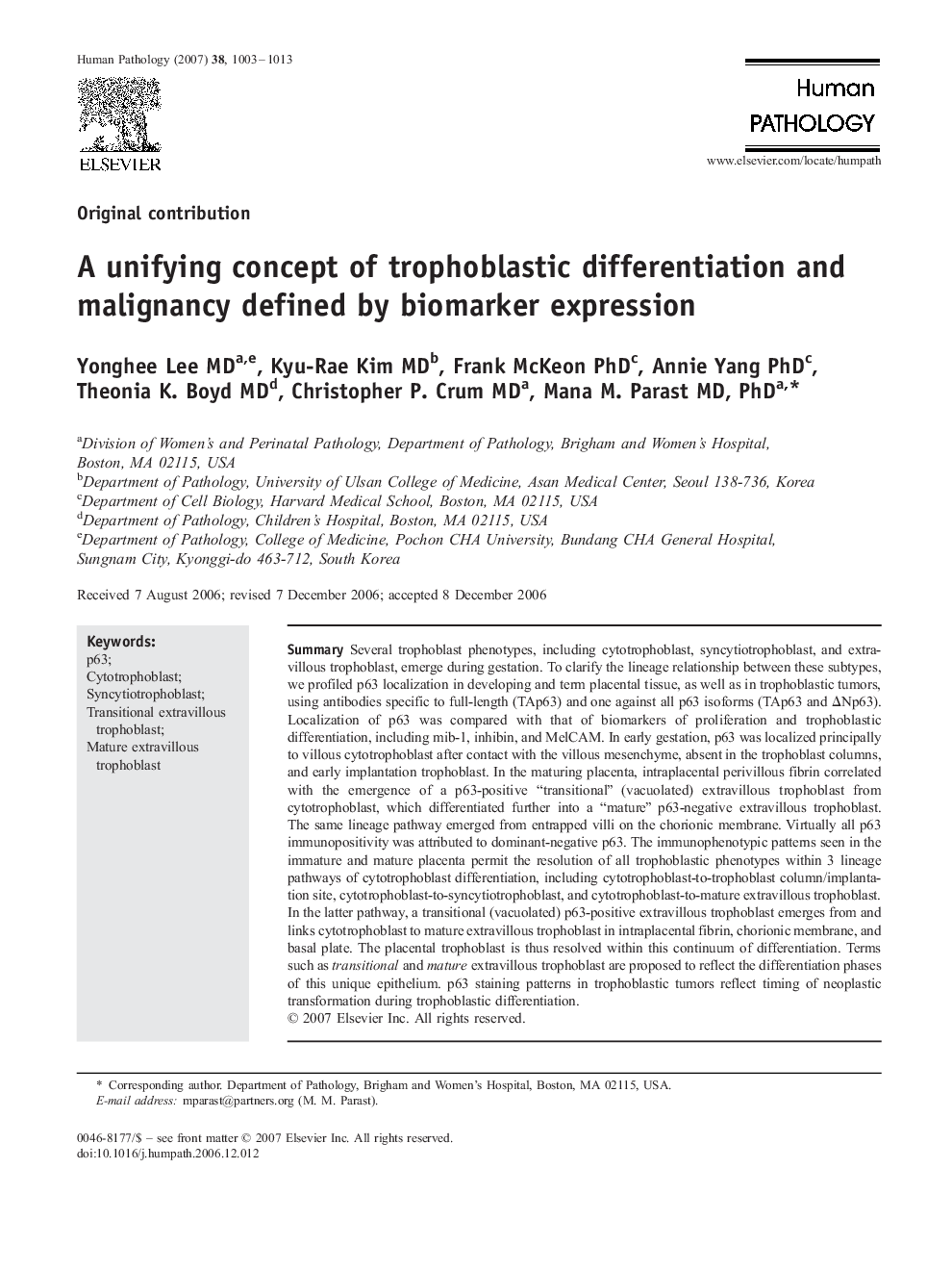| Article ID | Journal | Published Year | Pages | File Type |
|---|---|---|---|---|
| 4135488 | Human Pathology | 2007 | 11 Pages |
SummarySeveral trophoblast phenotypes, including cytotrophoblast, syncytiotrophoblast, and extravillous trophoblast, emerge during gestation. To clarify the lineage relationship between these subtypes, we profiled p63 localization in developing and term placental tissue, as well as in trophoblastic tumors, using antibodies specific to full-length (TAp63) and one against all p63 isoforms (TAp63 and ΔNp63). Localization of p63 was compared with that of biomarkers of proliferation and trophoblastic differentiation, including mib-1, inhibin, and MelCAM. In early gestation, p63 was localized principally to villous cytotrophoblast after contact with the villous mesenchyme, absent in the trophoblast columns, and early implantation trophoblast. In the maturing placenta, intraplacental perivillous fibrin correlated with the emergence of a p63-positive “transitional” (vacuolated) extravillous trophoblast from cytotrophoblast, which differentiated further into a “mature” p63-negative extravillous trophoblast. The same lineage pathway emerged from entrapped villi on the chorionic membrane. Virtually all p63 immunopositivity was attributed to dominant-negative p63. The immunophenotypic patterns seen in the immature and mature placenta permit the resolution of all trophoblastic phenotypes within 3 lineage pathways of cytotrophoblast differentiation, including cytotrophoblast-to-trophoblast column/implantation site, cytotrophoblast-to-syncytiotrophoblast, and cytotrophoblast-to-mature extravillous trophoblast. In the latter pathway, a transitional (vacuolated) p63-positive extravillous trophoblast emerges from and links cytotrophoblast to mature extravillous trophoblast in intraplacental fibrin, chorionic membrane, and basal plate. The placental trophoblast is thus resolved within this continuum of differentiation. Terms such as transitional and mature extravillous trophoblast are proposed to reflect the differentiation phases of this unique epithelium. p63 staining patterns in trophoblastic tumors reflect timing of neoplastic transformation during trophoblastic differentiation.
